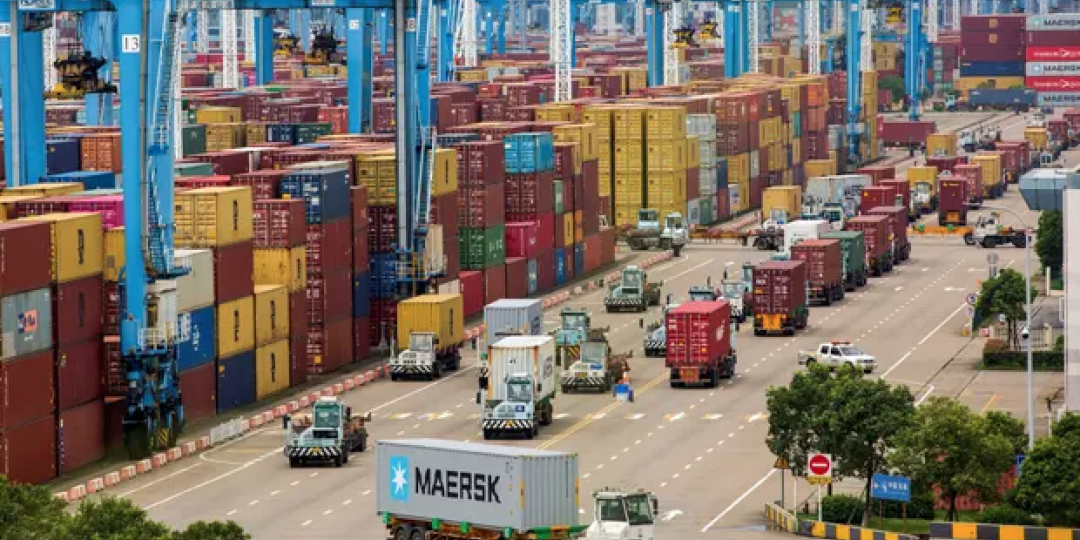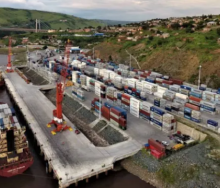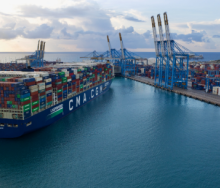Maritime consultancy Drewry has warned that the latest disruption of the global container system will see things worsen for Beneficial Cargo Owners (BCOs) before partially improving.
According to its latest Executive Briefing, Chinese lockdowns are hitting the already severely stressed global container distribution system which is suffering reduced capacity due to pervasive congestion.
“A positive reading of this situation could be that the reduction in volumes will speed up the normalisation of liner network performance and port productivity. Indeed, port congestion is easing in the US and Europe,” Drewry said.
“In Shanghai, where lockdowns started in mid-March, probably the most immediate impact was on road hauliers who found themselves having to quarantine 14 days before being allowed to exit the “infected area” and return to the port’s hinterland. Obviously, this added significant cost to inbound containers that had already landed at the terminal and could not be evacuated,” Drewry said.
Other imports, as well as most export flows, were diverted to neighbouring ports like Ningbo and even Qingdao. However, these ports were already congested prior to this additional cargo influx.
“We’re now almost two months into the Shanghai lockdowns. Between the start of the lockdowns in weeks 11 and last week (week 18), the number of weekly port calls in Shanghai trended downwards by 2.5 port calls per week, while at Ningbo and Qingdao the number increased by an average of 1.1 and 0.5 (respectively) per week,” Drewry said.
However, the reduction in Shanghai port calls has accelerated considerably since mid-April (week 15), with the total reduction between week 15 (122 vessel calls) and week 18 (91 vessel calls) being 31, or 26%, of which 25 were last week.
Despite the reduction in vessel calls, the sea-side congestion worsened considerably following the Shanghai lockdowns, peaking at 277 vessels in week 15. The increasing sea-side congestion, in combination with a huge drop in export cargo volumes due to almost all factories in the Shanghai hinterland being shut, is likely what caused carriers to pull their ships out of the queue and call at Ningbo and Qingdao instead.
“Even before the Shanghai lockdown threatened international supply chains, many BCOs and manufacturers in the US and Europe have had to stop selling products, either because margins dropped to unacceptable/negative levels or due to the stoppage of supply. Others did find sourcing alternatives, mostly in Vietnam or closer to home,” Drewry said.
The consultancy added that the greatest uncertainty was when China's lockdown restrictions would end, and the “bullwhip” rebound impact this would then have across the supply chain.
“Many factories will need first to replenish their inventories of raw materials, and then do a “cold restart”. Also, liner shipping schedules will take at least one rotation to normalise. This would mean that even if lockdowns were to end today, the predictability and capacity of the container distribution system would be jeopardised during summer peak season,” Drewry added.
“Not to mention the fact that once the Chinese manufacturing engine starts to heat up, their port productivity is restored, and liner schedules are back in form, boxes might get stuck at destination as those port and inland distribution systems crumble yet again.”
Drewry has estimated that up to 260 000 TEUs of export cargo was not shipped from Shanghai in April because of the lockdown. This is the equivalent of 26 fully loaded 10 000-TEU containerships.
“Given that the summer peak season is normally busier anyway, the Shanghai rebound is likely to support a strong peak season and new capacity shortages,” Drewry said.













